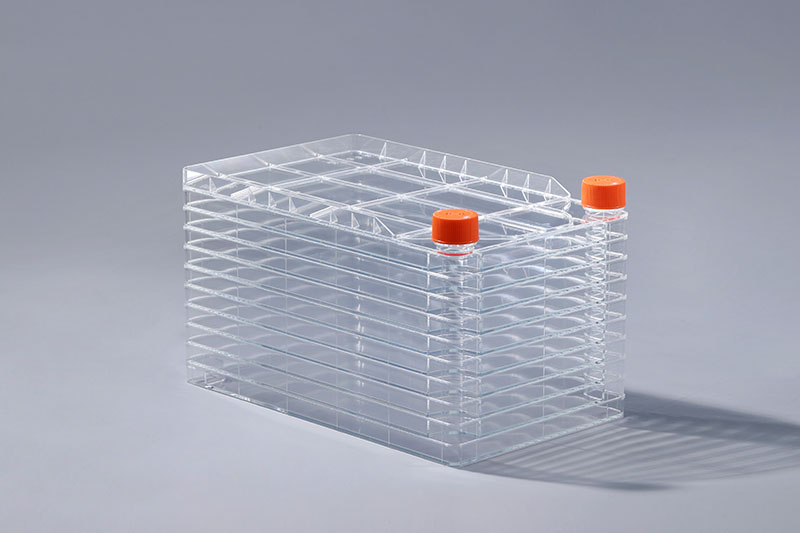은 다층 세포 배양 소모품으로 산업 대량 생산, 실험실 작업 및 대규모 세포 배양에 주로 사용되며 부착 세포에 이상적인 선택입니다. 이러한 종류의 소모품을 선택할 때 우리는 핵심 요소인 표면 TC 처리에 주의를 기울일 것입니다. 왜 이 특수 처리를 받아야 합니까?Cells는 두 가지 유형으로 나눌 수 있습니다. 다른 성장 방법에 따라 세포 및 현탁 세포. 현탁액 세포는 성장하기 위해 지지체에 부착될 필요가 없으며 배양 배지에서 현탁액으로 성장할 수 있습니다. 부착 세포는 성장하기 위해 부착할 수 있는 성장 표면이 있어야 하며 친수성 고체 계면만이 세포 부착을 허용할 수 있습니다.cell factory
세포 공장은 부착 세포의 배양에 주로 사용되며, 이는 사출 성형으로 처리됩니다. 투명 폴리스티렌(PS) 원료. PS는 고분자 재료로서 강도와 가소성이 우수하고 독성이 없어 일회용 세포배양 소모품으로 선호되고 있다. 그러나 PS의 표면은 소수성이어서 그 자체로 부착 세포의 성장에 도움이 되지 않습니다. 세포의 접착 성능을 높이기 위해서는 표면 개질 처리를 하고 친수성기를 도입하여 세포가 잘 자랄 수 있도록 해야 합니다.
요컨대 세포 공장 표면에 TC 처리를 하는 목적은 부착 세포의 성장. 현탁 세포 배양에 사용되는 소모품은 반드시 이러한 특수 처리된 용기가 필요하지 않지만 표면 TC 처리 후 소모품은 일반적으로 현탁 세포 배양에도 적합합니다.
In summary, the purpose of TC treatment on the cell factory surface is to adapt to the growth of adherent cells. The consumables used for suspension cell culture do not necessarily require such specially treated vessels, but the consumables after surface TC treatment are generally also suitable for the culture of suspension cells.
The FAI climbed 5.9 percent year-on-year in the first 11 months of 2018, quickening from the 5.7-percent growth in Jan-Oct, the National Bureau of Statistics (NBS) said Friday in an online statement.
The key indicator of investment, dubbed a major growth driver, hit the bottom in August and has since started to rebound steadily.
In the face of emerging economic challenges home and abroad, China has stepped up efforts to stabilize investment, in particular rolling out measures to motivate private investors and channel funds into infrastructure.
Friday's data showed private investment, accounting for more than 60 percent of the total FAI, expanded by a brisk 8.7 percent.
NBS spokesperson Mao Shengyong said funds into weak economic links registered rapid increases as investment in environmental protection and agriculture jumped 42 percent and 12.5 percent respectively, much faster than the average.
In breakdown, investment in high-tech and equipment manufacturing remained vigorous with 16.1-percent and 11.6-percent increases respectively in the first 11 months. Infrastructure investment gained 3.7 percent, staying flat. Investment in property development rose 9.7 percent, also unchanged.
 English
English



















































